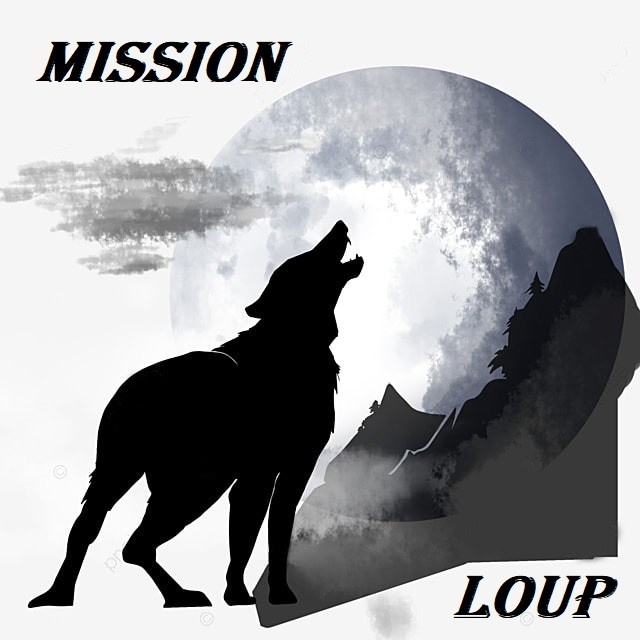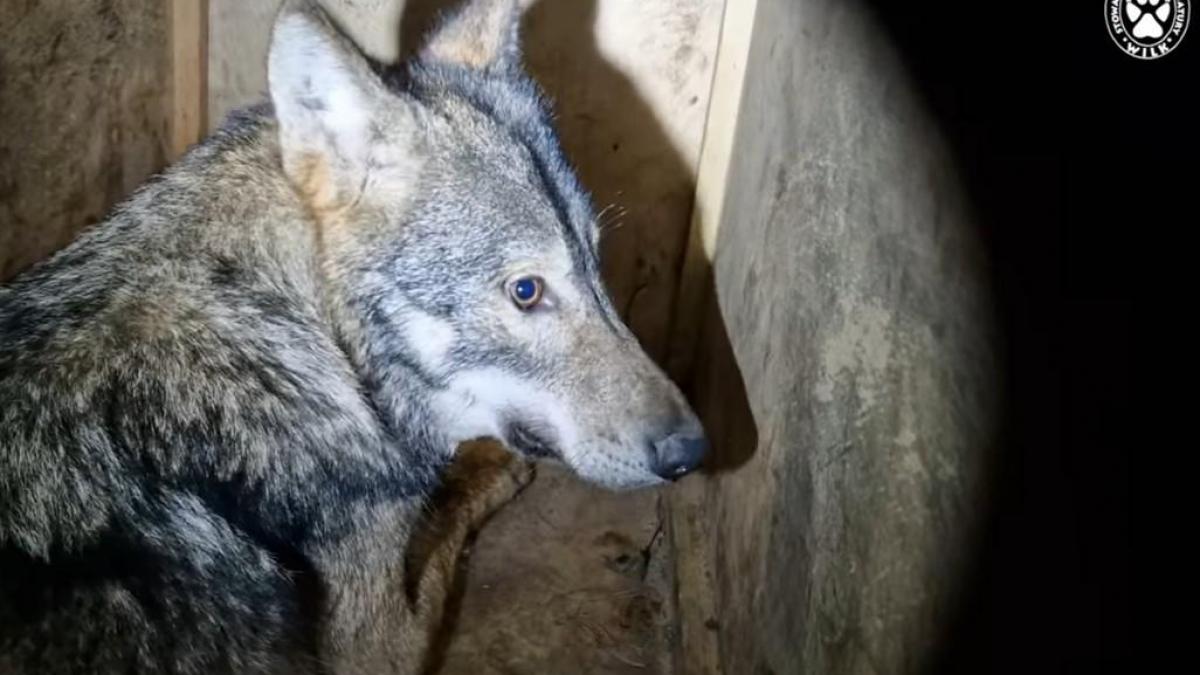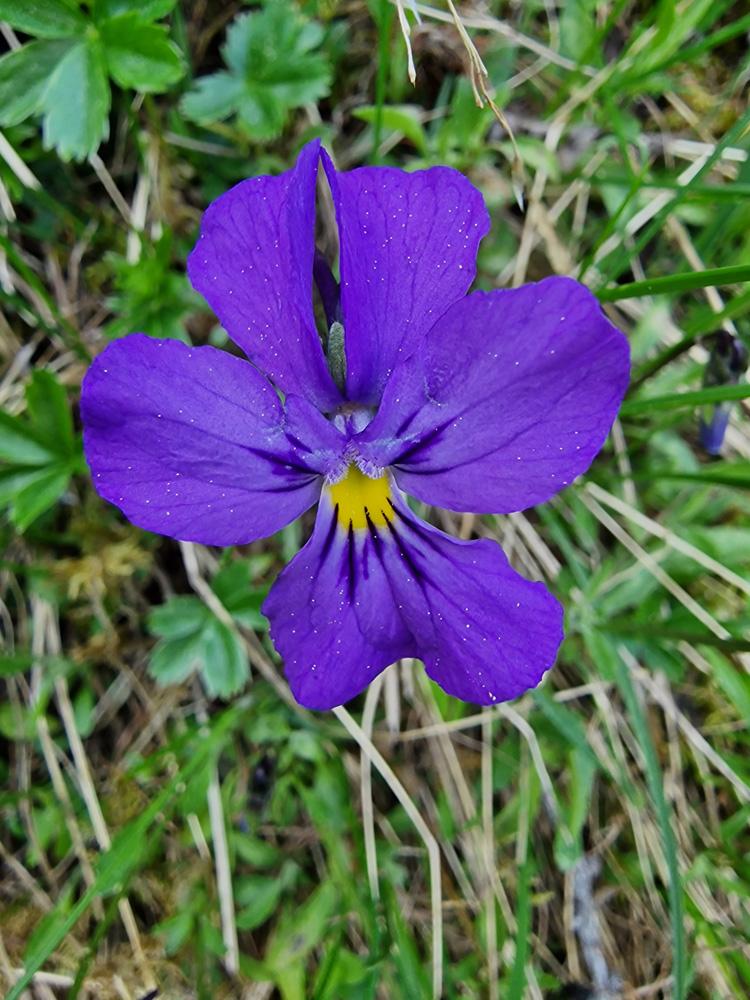
Summer is coming, but the mornings can still be a little chilly. Our alarm clock rings at 4 am, irritating our nerves and making us feel that the night has been far too short. But once we're up, contemplating the brightening sky and the still dark shadows of the trees, we realize how magical and precious this present is, so we're ready and motivated.
The walk to our lookout point isn't that long, we cross two meadows before entering the forest, breathing in the scent of the fir trees. We won't hide the truth : we have to wait a very long time during our scouting days. Those who have already practised this art, which certainly develops our senses, making us much more attentive and witnessing miracles, know this. When the animal we want to photograph is a deer or a chamois, we're allowed to be distracted for a few minutes, reading a book while keeping with an occasional glance. But we can't practise this way with the wolf. In fact, he can cross the meadow in just a few seconds, so we've to be very attentive at all times, checking the whole perimeter every 1-2 minutes, for hours. The color of wolf's coat blends seamlessly into the environment, and his light, quick stepspeed enable him to take cover quickly. We also observe the reactions of ungulates and deer, following their glances as they freeze.
Sometimes we don't see anything for hours, and other times we don't even have time to settle in before wildlife surprises us, inviting itself unannounced. Like that morning at 5.15 am when, as soon as we'd put our bag down on the ground, we saw three daguets (1) coming straight at us, without seeing us. As we were upwind (2), we remained motionless and they ate 6m away from us for long minutes. They never saw us, and these were magical, precious moments, a true sharing of the intimacy of wildlife.
Out of reach of our photgraphic equipment, chamois play, youngsters cavorting, leaping for joy and running madly. 4-5 deer females slowly emerge from the forest to feed before the heat arrives. A little conflict between a one-year-old male and a doe brought a smile to our faces. Once again, the female had the upper hand, and the teenager was put in his place. Many species of birds abound in the area: blackbirds, alpine redstarts, black grouse, chickadees, red tail birds and even a few woodpeckers hammering frantically at the trunks. Their song invades our ears, especially that of a grouse which should not be very far away from our position, but stubbornly hides behind a grove of fir trees and won't show itself. The sun comes up, warming us up, as the storms of the previous nights had made the ground very wet.
The sun coincides with the arrival of our little buddies, the marmots. They brighten up our days with their funny faces, games and movements. All of a sudden, the alarm goes off : a shrill cry rings out, less than 6 meters away from us. A threat was there, but after examining the entire perimeter, the marmot changed her mind : the danger wasn't so real after all.

Continuous chirping attracts our attention. A dance of red tail birds is taking place and we notice a juvenile on a rock. We point our lens in its direction and wait patiently for one of its parents to approach. The miracle happens, the exchange of a fly between the beak of the parent and the youngster, the photo is taken !

On our way back home, we were lucky enough to come across a doe and her fawn, lying in a grove, and observe their communication. The tenderness of a mother for her baby, gently licking his muzzle and welcoming him into the hollow of her flank for a welcome nap. These moments are rich and teach us so much about wildlife, species, intra- and inter-species interactions. Of course, we haven't seen any wolves, but we were fully aware that encounters would be rare. We knew that the subject we're looking for would not be found in the blink of an eye. But our observations of the wildlife's intimacy and our discoveries of the flora makes us forget any frustrations we might feel. We feel privileged and grateful to witness nature's magic !
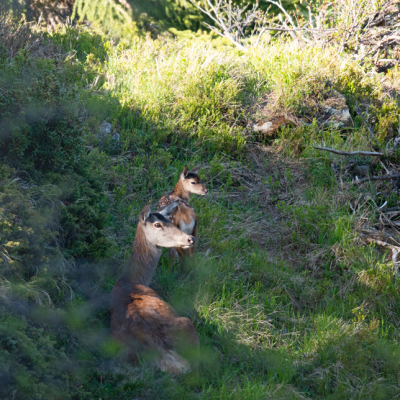
At the end of the afternoon, after setting the camera traps, we set off again for another stalking session. We now prefer a more discreet and intimate location. We're lucky enough to come across a magnificent stag, who still has his "velvet" antler (3), who offers us a magical vision of power. The king of the forest then gives way to a herd of females, since at this time of year, males and females live separately.

Among them are 1-year-old daguets, born in May 2022 and showing their first velvet daggers (4). The females graze, lie down, stand up, move around, lie down again and communicate through gestures and postures. One doe puts her youngster back in place, leading to a defiant face-off, heads thrown back, then to an upright posture, both standing on their hind legs. The whistle of a marmot raises the alarm : the female sub-adult, that we've named "Ella", is in the area according to our monitoring, so the prey is on the alert. The herd prefer to return to the forest, looking for more safety. The marmot goes on whistling but then lie back on a rock until sunset.
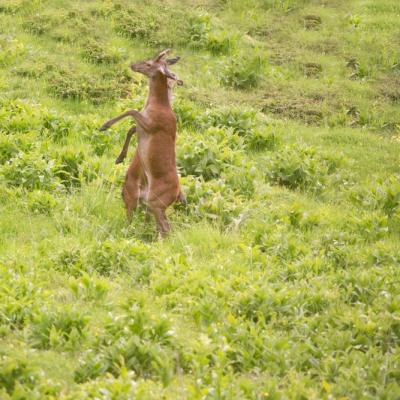
Our long day, which began at 4 am., came to an end at around 9:30 pm. We return home with our heads full of beautiful memories and already thinking about the strategic position to adopt for the following day, hoping to bump into Arsène, Lupine or Ella, who's living her own life on the territory. Tomorrow is another day...
Dictionary
(1) Daguet : young male deer who's less than two years old (bearing his first antler).
(2) Upwind : photograph use this word when they position themselves with the wind blowing in the opposite direction to the animal, so that it doesn't sense them.
(3) Velvet deer : between February and April, deer lose their antlers. When they grow back, they are covered with a fine velvet-like skin. The antlers grow at a rate of around 1 cm a day, which requires the deer to eat a lot of minerals. Regrowth takes between 90 and 140 days, and by midsummer the deer will be frantically rubbing against the trees to remove the velvet.
(4) Daggers : the first antlers of a male deers are long and tapered, we called them daggers.
Article : TT - Wolf Mission
Photos : Wolf Mission (copyright)

